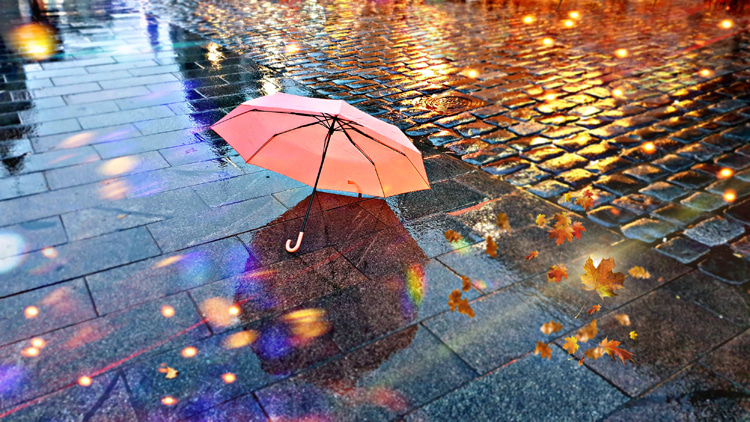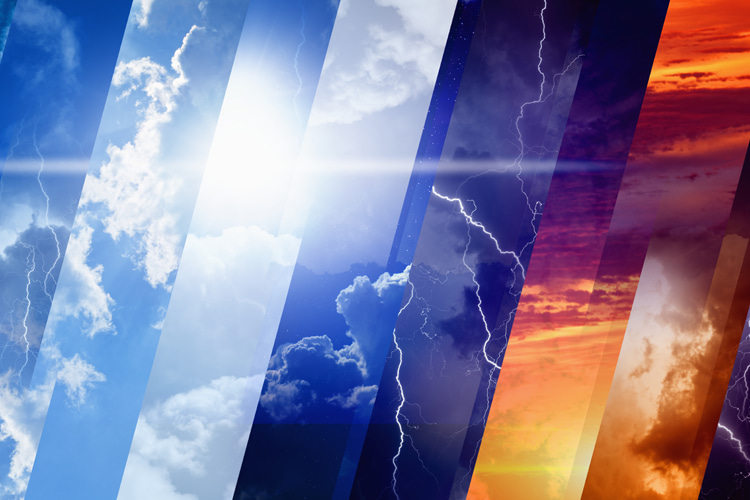Check the current temperature outside in your location and around the world.
How's the weather outside today? Is it hot and sunny, cloudy and humid, cold and rainy, or freezing and snowy?
Technically, the official temperature is measured in the shade - not in direct sunlight, so the thermometer doesn't heat up and provides a false reading.
The following weather map gives you accurate, real-time air temperatures - in Fahrenheit and Celsius - and a visual representation of nearby regional, national, and continental differences.
Keep in mind that the accuracy of daily forecasts drops significantly after ten days, and even in the 5-to-10-day range, notable errors and miscalculations may occur.
What's the temperature outside? Check the latest detailed weather forecast for the next five days from anywhere in the world. Zoom and click anywhere on the map to get the local temperature.
Actual Temperature vs. Feels-Like Temperature
There is a difference between the actual outside temperature and the so-called "feels like" temperature.
The explanation for this subtle yet relevant variation between concepts lies in the variables taken into consideration to define "feels like" temperature.
The "feels like" temperature considers three key factors: the actual air temperature, the strength of the wind at around five feet, and relative humidity.
But why is there a need to differentiate between measuring methods?
It's because people often comment that it's a lot hotter or a lot colder than what the temperature or the observation tells them.
The "feels like" temperature is a practical way of helping people better understand how they're going to feel when they get outside, no matter the time of the day.
The official temperature normally records the air temperature from a thermometer installed on weather stations, radars, and meteorological observatories.
On the other hand, the "feels like" temperature is calculated to understand how an average person would feel dressed for the current season outside.

The Wind Chill Effect
The truth is that wind and relative humidity can dramatically change how someone experiences the air temperature outdoors.
For instance, when the wind is especially strong, it will make us feel colder. This is called wind chill, and there's even a chart that addresses it.
"So, for example, if you're about to head outdoors, you check the temperature forecast, and it says 22 °C [71.6 °F], so you decide to leave the jumper at home," explains Jenny Sturrock, senior meteorologist at Australia's Bureau of Meteorology.
"Then, when you head outdoors, you feel it's a lot chillier than 22 °C [71.6 °F]."
"The reason this occurs is that we all have a thin, warm layer of air around our body, and the wind comes along, and it strips away that layer, leaving our skin exposed so that we feel colder."
On the opposite side of the spectrum, when humidity is the key factor, it can often feel much warmer - this is often the case in tropical regions.
"So the temperature could be 29 °C [84.2 °F], but it feels a very warm 38 °C [100.4 °F]," adds Sturrock.
"The reason for this is that, normally, when we're hot, we sweat, and that sweat evaporates off our skin, cooling us down."
"This process is known as evaporative cooling. When the air is humid, there's a lot of moisture already in the air, and that evaporative cooling process is significantly reduced."
As a result, the heat and the sweat are kept really close to our bodies, preventing us from cooling down.
Ultimately, it makes us feel hotter than the temperature reading.
The "feels like" temperature forecast is a handy tool to help you avoid heat stress on your regular body temperature and better understand how it might feel outside.
